As a proponent of affordable housing, i was glad to come across this project in South Africa from as far back as 2007. This is The Sandbag House, which was aimed at "Re-visualizing low income housing for a shanty town using simple mud-and-wattle building techniques which is highly energy efficient and can be built without skilled labour."
Designed by
MMA Architects, the Sandbag House achieves this goal. On a budget of $6,150, which comes to very little over N1,000,000, it uses locally sourced inexpensive materials, a local 'future-resident' community workforce and a construction method that replaces traditional brick-and-mortar with sandbags (developed by
ecobeams) to create a strong, safe and cheap way of delivering affordable housing.
The Design prototype covers 40sqm to cater to a single family 5. Standing on two-storey timber frame, with the sandbag infills, the house is energy efficient, requiring no electricity or skilled labour to construct.
Its a very scalable prototype that can serve larger families and grow to be even multifamily structures.
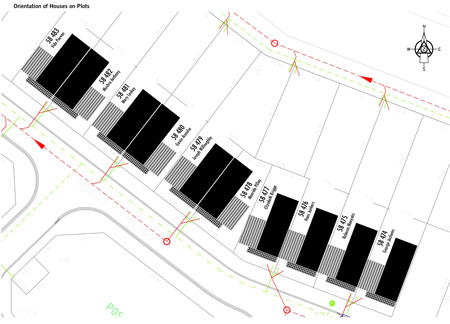 |
| site plan |
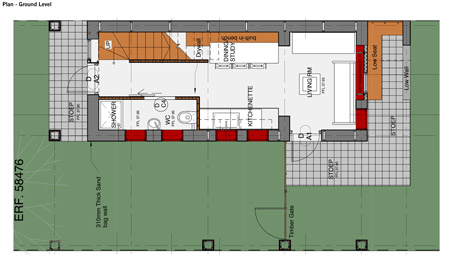 |
| ground floor |
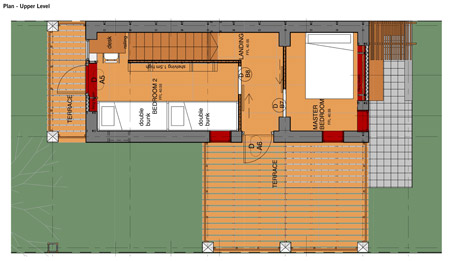 |
| first floor |
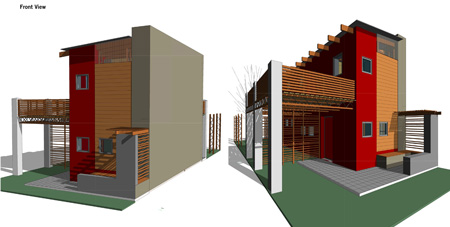 |
| approach perspectives |
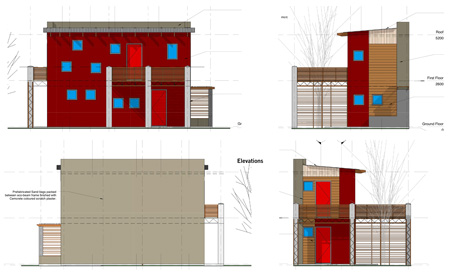 |
| elevations |
 |
| street view rendering |
 |
| scale models |
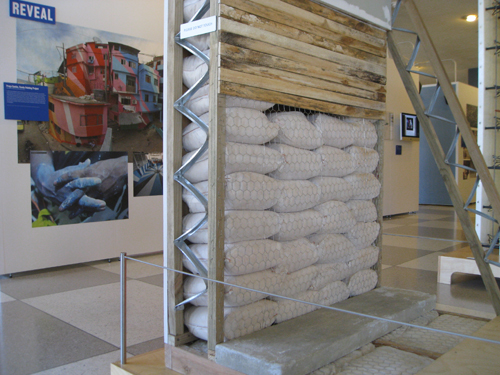 |
| the ecobeams sandbag system |
To construct the walls for the houses, sandbags are assembled inside timber frames and then plastered over, with strong wire attached to the corner sections. The interior 'ring beam' carries the weight of the upper floor and the only time concrete was used in the build. The Sand provides very good thermal quality and prevents moisture from getting through. Aside from being waterproof, the sandbags also create soundproof and fireproof spaces and provides a speedy construction pace, saving time and money. It took about 12 weeks or 3 months to erect 8 of the 10 homes. Impressive. Though the issue of water and flooding maybe on the minds of most, a half finished home was said to have stood firm during the storm season while construction was ongoing. Cost constraints forced a few changes and omissions in the final products, such as the terraces, but nonetheless, the initiative was successful and the Sand Bag House, a triumph.
Upon completion, the blueprints and designs are expected to be compiled into a manual and donated to African Governments for royalty free use in developing similar projects as solutions to the great housing crisis we're facing.
 |
| freedom park before construction starts |
.jpg) |
| shanty towns in the area |
 |
| a 'family home' within the shanty town |
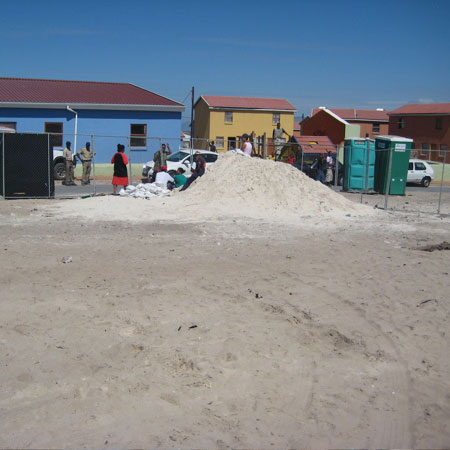 |
| getting ready for sand bagging. |
 |
| the community actively involved in sandbagging |
 |
| kids and adults in the community lending a helping hand |
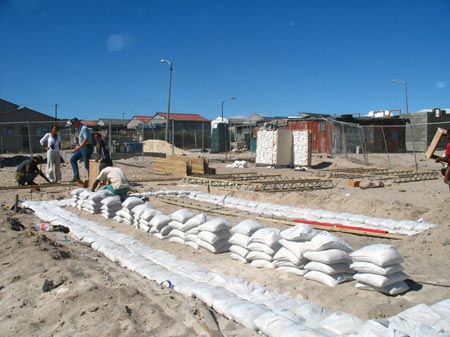 |
| 'laying the sandbag foundation |
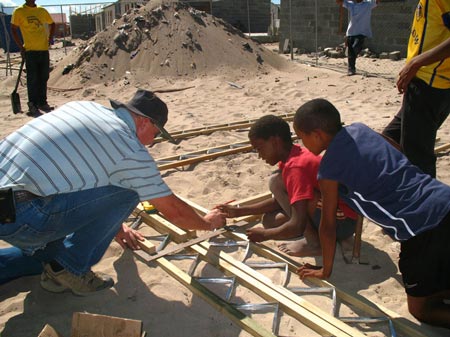 |
| working on the ecobeams with the community kids |
 |
| the materials used, timber, ecobeams, wiremesh and sand...lots of sand. |
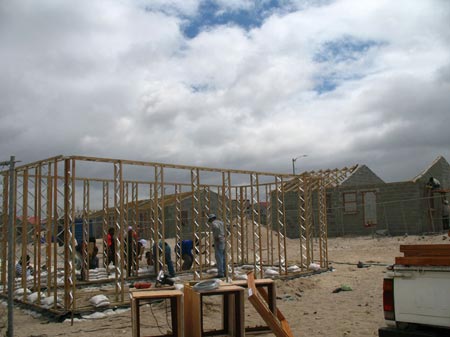 |
| timber ecobeam frames going up |
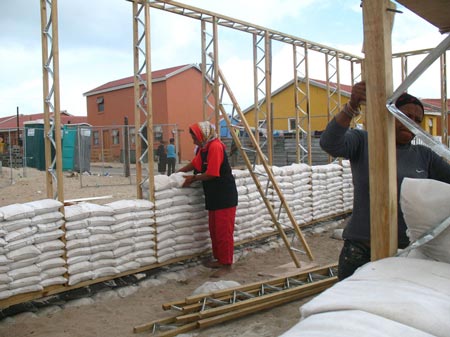 |
| the sand bag infill |
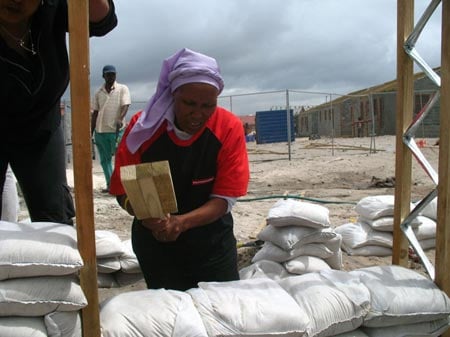 |
| compacting the sand bag infill |
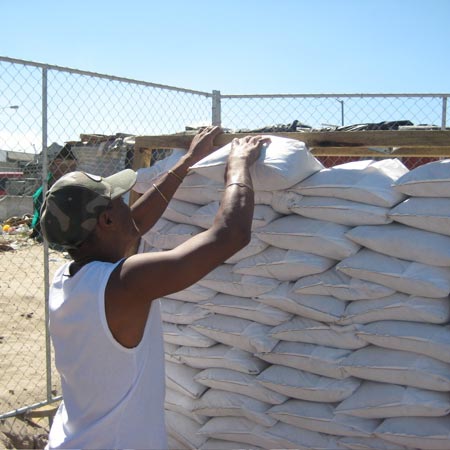 |
| community resident at work |
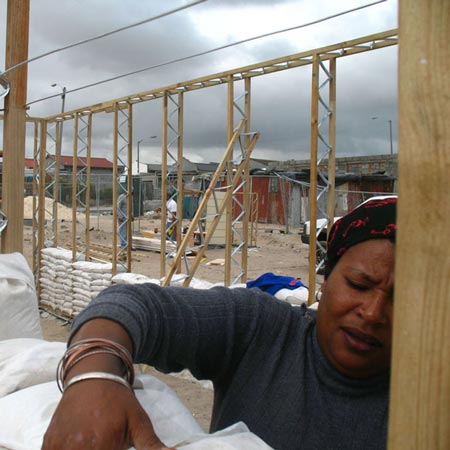 |
| filling the 'walls' with 'sand' |
 |
| sand bag packing against the cladding |
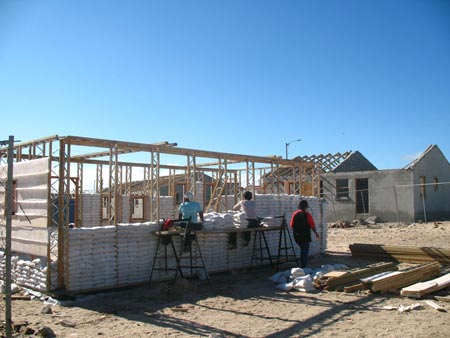 |
| midway throught the first level |
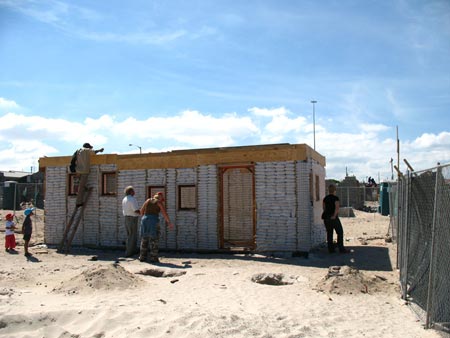 |
| first level sand bag filling done |
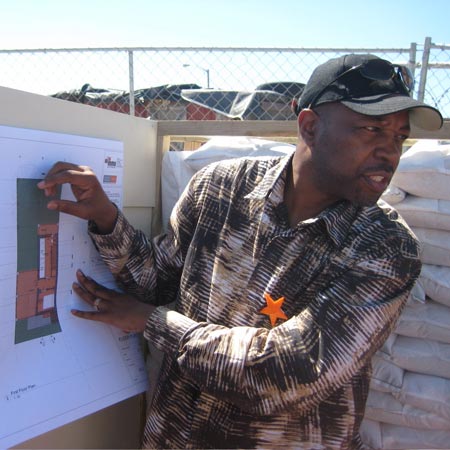 |
| Luyanda Mpahlwa of MMA architects |
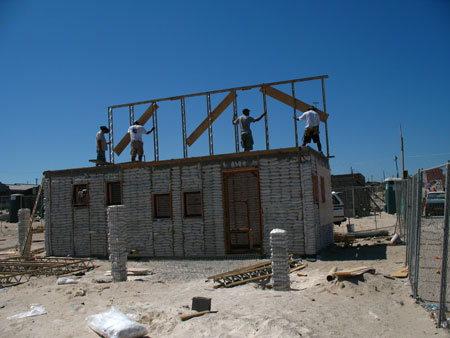 |
| first floor framing |
 |
| plastering the ground floor walls |
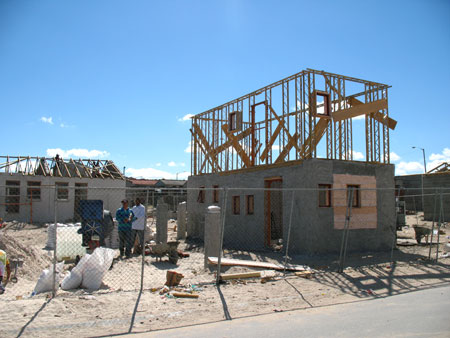 |
| first floor framing almost done |
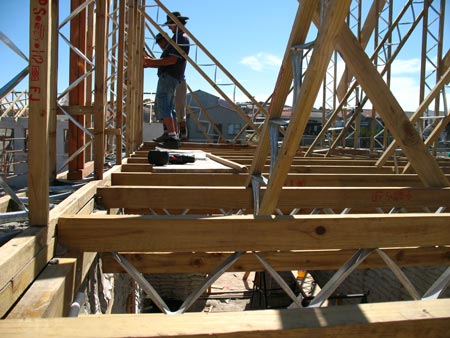 |
| first floor framing |
 |
| windows surrounding by sandbags |
 |
| making good progress |
 |
| looking good |
 |
| one finished house...9 more to go |
 |
| ready to move in |
 |
| inside the ground floor |
 |
| kitchen and backdoor |
 |
house 2 rising
 |
house 2 almost done
|
|
 |
| more housing rising |
 |
| more homes complete |
 |
| more homes, ready for residents |
![[2009-07-01+044+s.jpg]](https://blogger.googleusercontent.com/img/b/R29vZ2xl/AVvXsEh0kh-q7yTb7npuaBDlx8u2YcZj28_WsY6kjno3WM1TvhrI5JylvzFCizEaaLe2fWVR_kb02QVg03ZboriuJeWsy9IaxmpNAnqm89sggBF8GQJnKqB4vtyOdhE4WOSELYyCmTTpwEHAyh8/s640/2009-07-01+044+s.jpg) |
| a finished house 1. |
![[2009-07-01+038a+s.jpg]](https://blogger.googleusercontent.com/img/b/R29vZ2xl/AVvXsEgDpv2Xz-TehfYqax77jZ8TGQ9dfZG_kjRltZg6DspP9oRNHiakkCdAQLYTr_BW2-A_pmBBBWbLxCOBObJsdWvvPj5D5RRsohLhwQS_Wq7SVmdpz88lzjHdU0U4B411Oaicg7t7xpnbiGk/s640/2009-07-01+038a+s.jpg) |
| the virtually completed development |
This is a truly inspiring piece of work that proves that solutions exist if only we can explore and create more. It may not be the most elaborate, or the most trendy, but it functions as intended and meets the needs of those that it was designed for, giving them a safe, pleasant and more dignified space that they can call home.
Also many thanks to
dezeen,
inhabitat,
creative review and
open architecture network for the details and images.





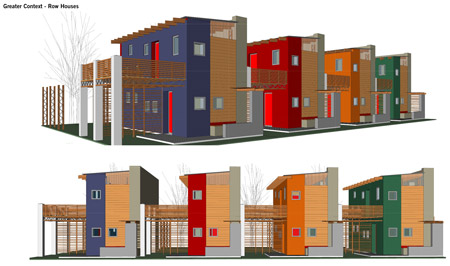




.jpg)














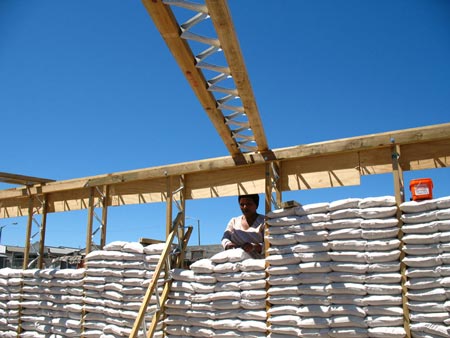
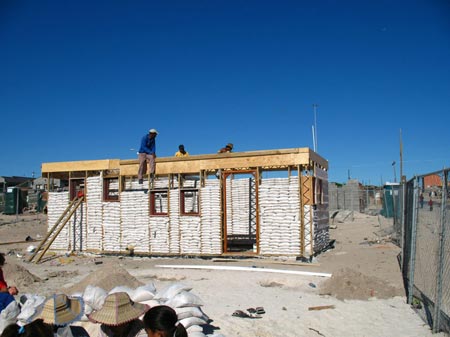

















![[2009-07-01+044+s.jpg]](https://blogger.googleusercontent.com/img/b/R29vZ2xl/AVvXsEh0kh-q7yTb7npuaBDlx8u2YcZj28_WsY6kjno3WM1TvhrI5JylvzFCizEaaLe2fWVR_kb02QVg03ZboriuJeWsy9IaxmpNAnqm89sggBF8GQJnKqB4vtyOdhE4WOSELYyCmTTpwEHAyh8/s640/2009-07-01+044+s.jpg)
![[2009-07-01+038a+s.jpg]](https://blogger.googleusercontent.com/img/b/R29vZ2xl/AVvXsEgDpv2Xz-TehfYqax77jZ8TGQ9dfZG_kjRltZg6DspP9oRNHiakkCdAQLYTr_BW2-A_pmBBBWbLxCOBObJsdWvvPj5D5RRsohLhwQS_Wq7SVmdpz88lzjHdU0U4B411Oaicg7t7xpnbiGk/s640/2009-07-01+038a+s.jpg)




No comments:
Post a Comment